Mammals
Related links: The Mammal Society
A total of 29 species (and two unidentified species pairs) have been identified on the Warren however only around 15 of these are resident, with seven occasional and seven vagrants or extinct.
Last update: 29/04/22
Hedgehog
Erinaceus europaeus
In the early 1990s was recorded “patrolling the dunes at night”, but there have
been no reported sightings since. The only recent record concerns a long dead
individual which was discovered in Greenland Lake in 2000 and was presumably
brought in by a gull or crow. Reports from the Golf Course and Buffer Zone in 2020 hint at a
welcome return. The tideline record below was recorded in May 2021.

Mole
Talpa europaea
Molehills are rare in the Recording Area, but this species can be found in the
grassland near the seawall, dead individuals have also been recorded in the Car
Park and more surprisingly on Warren Point.
Common Shrew
Sorex araneus
The most frequently recorded species. None of the shrews are seen regularly but they
can often be heard from undergrowth especially in wooded areas. Most identified
records concern individuals which are found dead on the edge of paths.
© Simon Thurgood
Pygmy Shrew
Sorex
minutus
Water Shrew
Neomys
fodiens
This larger darker species is occasionally seen
around the Main and Dune Ponds.
Common Pipistrelle
Pipistrellus pipistrellus
Bats can be regularly seen in the
summer months feeding over the Main Pond. It was not until 2004 this species was
identified using a Bat Detector.
Soprano Pipistrelle
Pipistrellus
pygmaeus
First
identified in 2009, now regularly recorded.
Whiskered/Brandt's Bat
Myotis sp.
Several of these were recorded
foraging over the site between 2009 2015 at least, still present in 2021.
Brown/Grey Long-eared Bat
Plecotus sp.
One was recorded in June 2021. Likely the widespread Plecotus auritus
(Brown), but there are local colonies of the very rare Plecotus austriacus
(Grey).
Noctule Bat
Nyctalus noctula
Recorded in the late
1980's, no recent records.
Rabbit
Oryctolagus
cuniculus
This species probably has a very long association with the Warren! It is thought
the area could have been first used as a warren by the Normans and this then
continued into the Middle Ages. The grazing pressure maintained by this species
benefits a large number of the rarer plants that grow in the Recording Area. Myxomatosis outbreaks occur each year, but these rarely threaten the population,
however the arrival of Viral Haemorrhagic Disease had a devastating effect.
Numbers stabilised, but at a much lower level. The recent second strain of VHD
has caused further declines.
© Simon Thurgood
Brown Hare
Lepus europaeus
The second record for the
Recording Area was on Warren Point on 5th Jul 2006. There is also an undated record
from the 1970s. It is possible that this species was present in the past before
regular recording began.
Grey Squirrel
Sciurus
carolinensis
A rare autumn visitor, even vagrant, to the Warren with fewer than 20 records, although
its occurrence has increased in recent years. Individuals are usually seen in
the Entrance Bushes or Dead Dolphin Wood but it has been recorded on the shore
of the Bight and along the seawall.
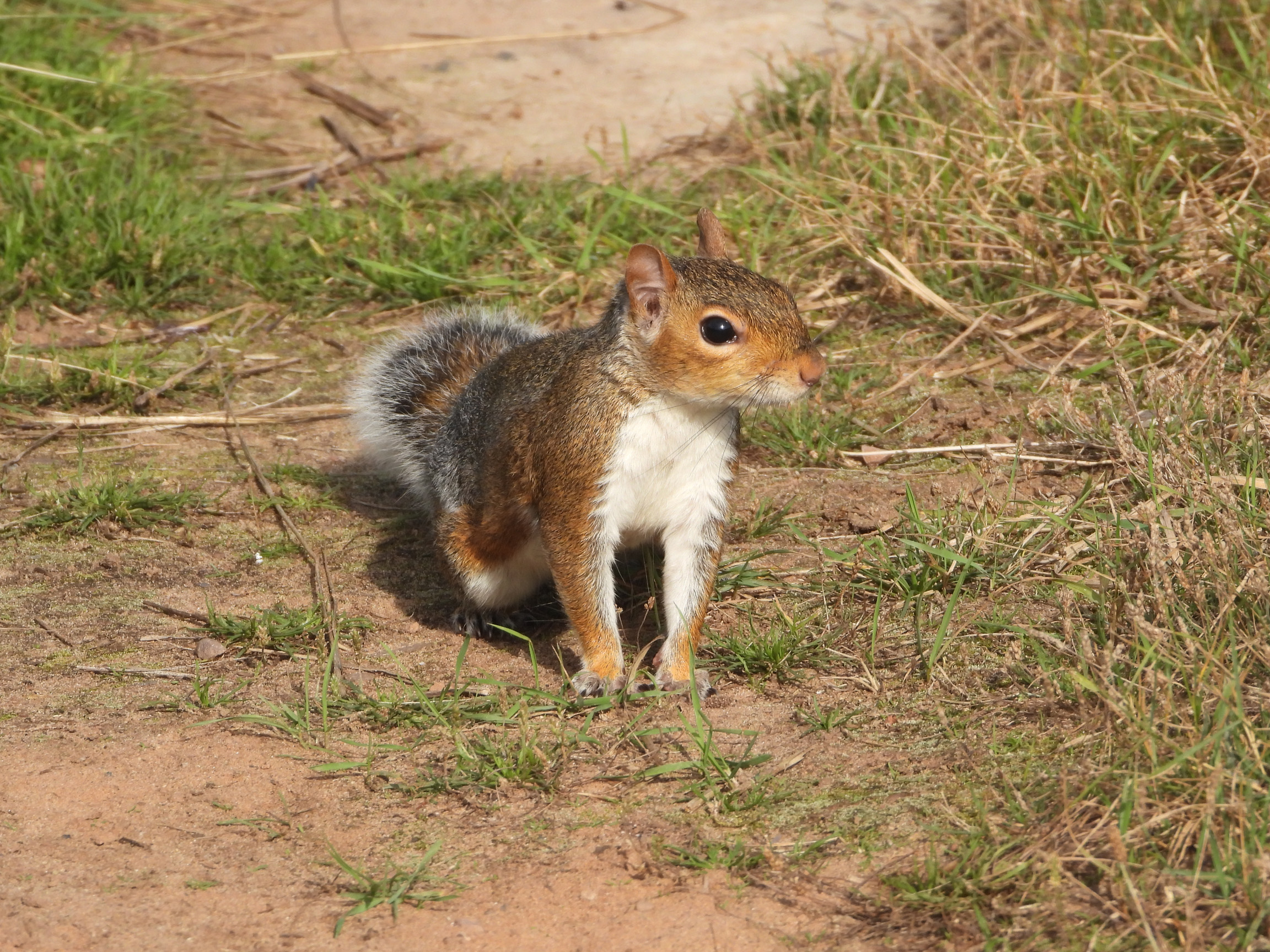
Field Vole
Microtus
agrestis
This species is rarely recorded, possibly due it secretive
nature. However it is occasionally seen around Greenland Lake.
Bank Vole
Clethrionomys glareolus
This species is very rarely recorded, the most recent record confirmed appears to be one
which was caught using small mammal traps in 1990.
Water Vole
Arvicola amphibius
First recorded in autumn 2013, with a further individual in 2014. the next
sighting was not until 2018 but the species is now established on site, but
rarely seen. These have come from a long established re-introduction project at
Cockwood Marsh.
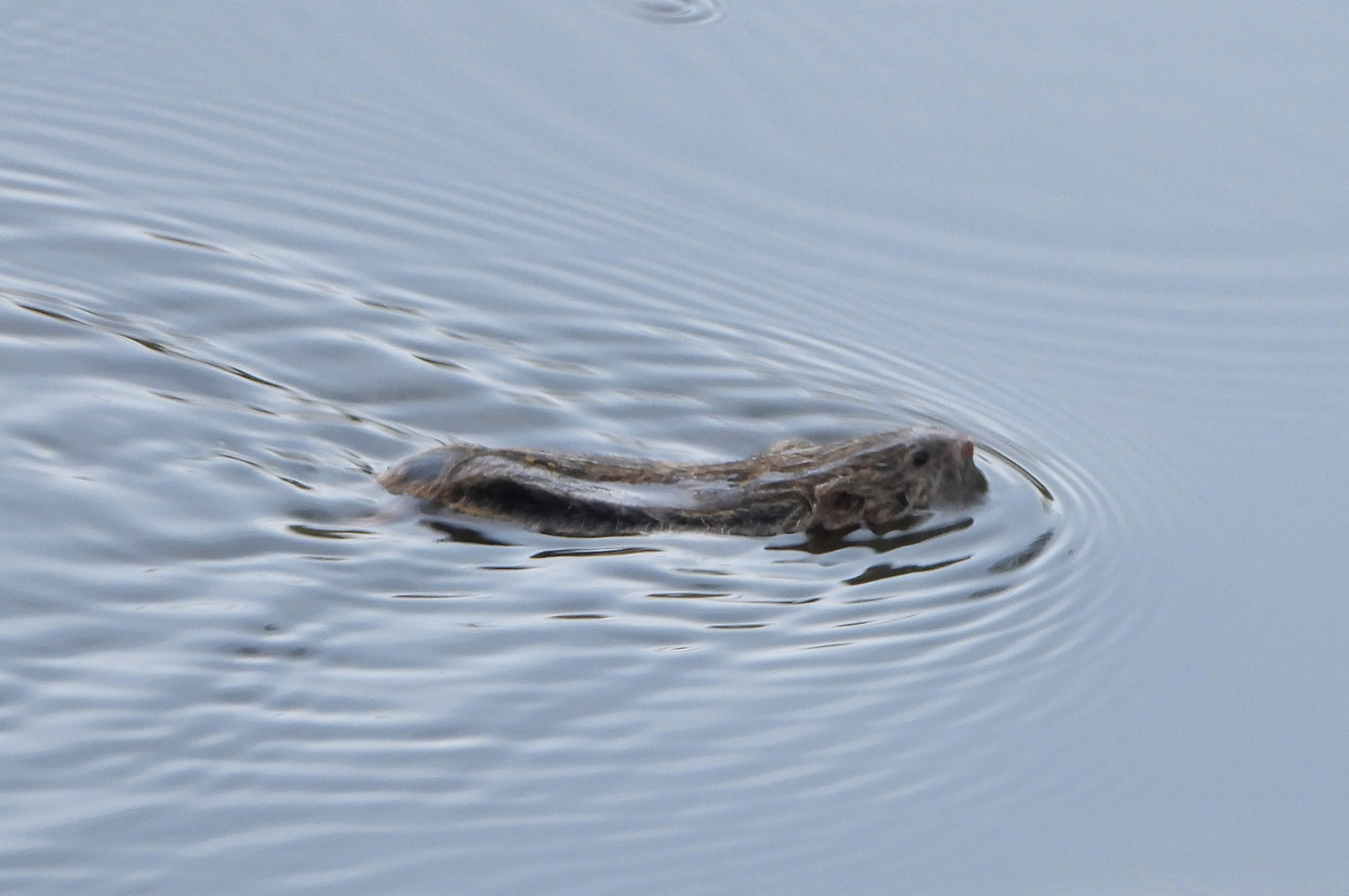
© Lee Collins
Wood Mouse
Apodemus
sylvaticus
Although no mammal trapping has knowingly occurred on site recently, this species is still
known to be present with occasional sightings.
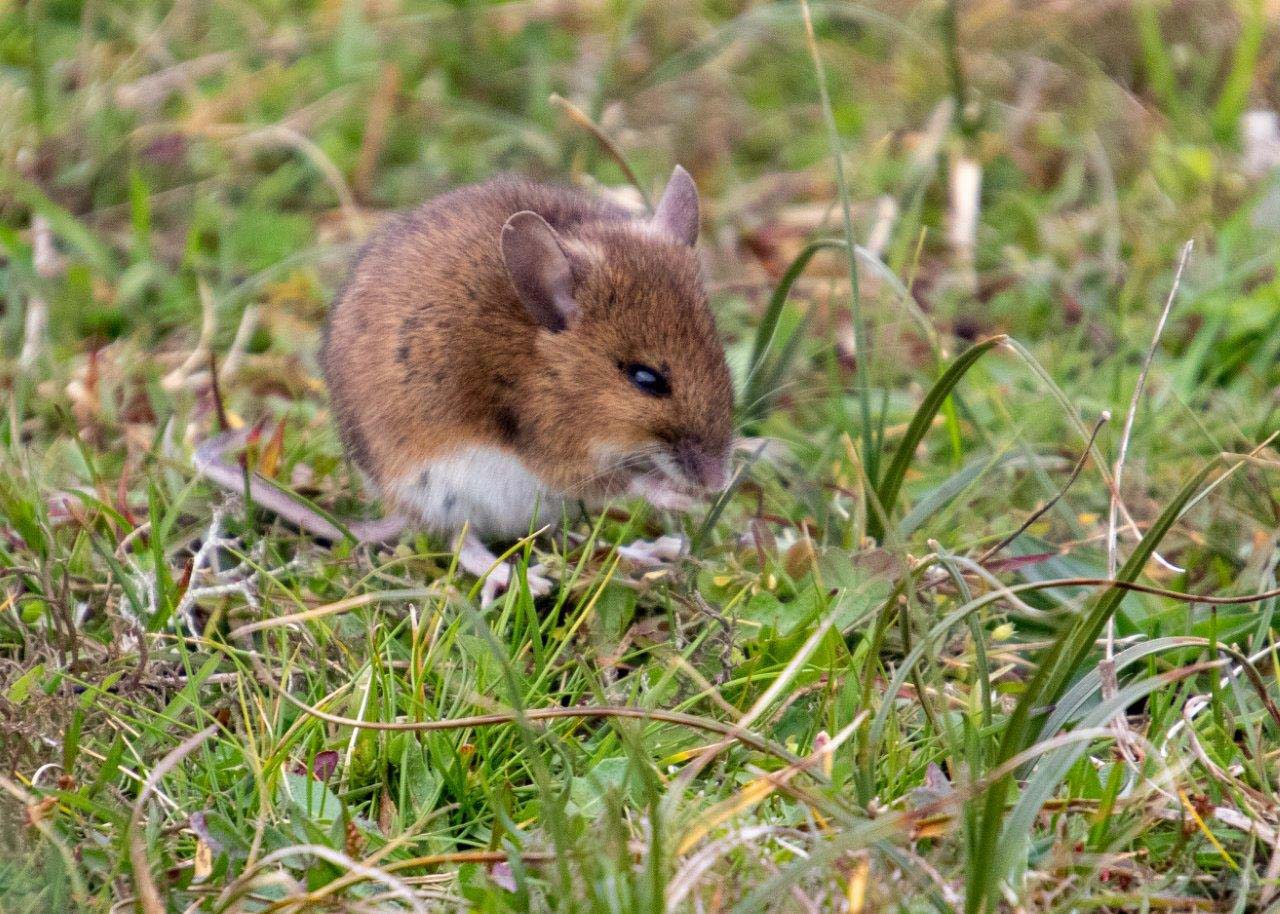
© John Gowland
Brown Rat
Rattus
norvegicus
Most commonly seen around the amusements area, its tracks however can be seen
anywhere on the Dune Ridge.
Porpoise
Phocoena
phocoena
The
third record was only on 5th December 2004, however they have become more regular
in recent years.
Long-finned Pilot Whale
Globicephala melas
There have been at least two records of this species along the tide line. The
first involved an adult which was washed ashore dead in February 1992, it had
injuries suggesting it had been in collision with a ship. The other record
occurred in October 2001 when a small unweaned calf was found stranded near
Warren Point, unfortunately it was too ill to be refloated and had to be put
down. What was presumably this individual was reported the day before along with
some distant dorsal fins that could have been this species.
The third recent and the first non stranded record was an adult offshore during
the morning of the 21st May 2005.
[Risso's Dolphin Grampus griseus]
Two probables were seen distantly off Langstone Rock on 12th December 2010.
Bottle-nosed
Dolphin
Tursiops truncates
Dolphins were regular
feature of the summer months until recent years, although they have been recorded at all times of
year. In summer a pod of up to 30 animals is usually present in this area of
Lyme Bay, with records from Torbay and Teignmouth relating to the groups seen
off the Warren. If feeding conditions are good they can often be located by
searching the area of sea around diving Gannets.
Common Dolphin
Delphinus
delphus
The first recent record, in March 1997, involved two
individuals well watched swimming into the estuary mouth before heading
back out to sea. Since then there have been four records of up to 20
individuals.
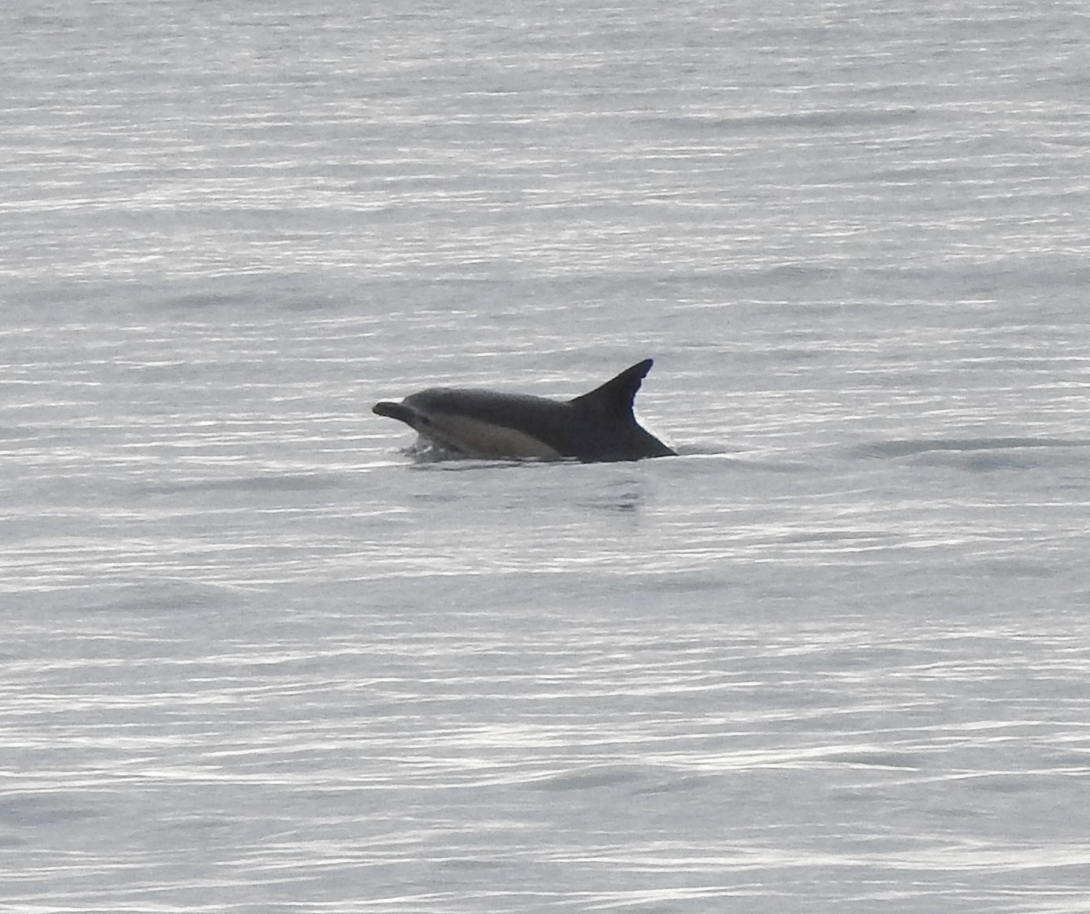
© Alan Keatley
Fox
Vulpes vulpes
There are usually at least two dens in the Recording Area and
individuals can be seen throughout the year, although mostly only early morning
or late evening.
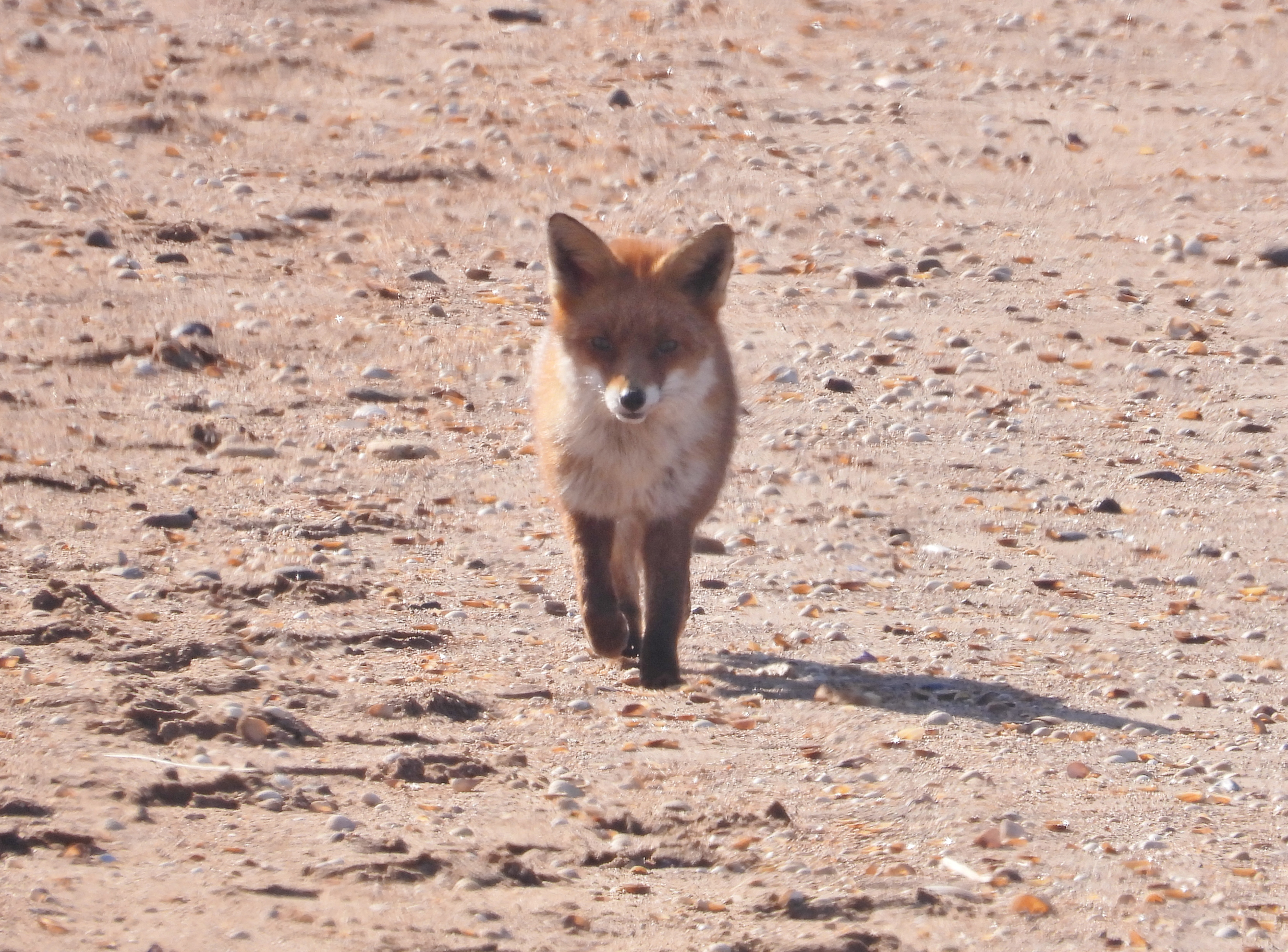
© Lee Collins
Stoat
Mustela
erminae
Most often recorded on the Dune Ridge, it was
confirmed breeding in 2004, when an adult was seen carrying two young from the
foredunes into an area of bramble. It was also confirmed breeding on the Golf
Course in 2013. The decline in Rabbits may have contributed to a drop in recent
sightings.
©
Alan Keatley
Weasel
Mustela
nivalis
One was seen near the visitor centre on
28th January 2005, the first confirmed record since the early 1990s. Another individual
was seen at the northern end of Greenland Lake on 26 Jun 2005,with occasional
sightings since then. Footprints are however frequently seen.
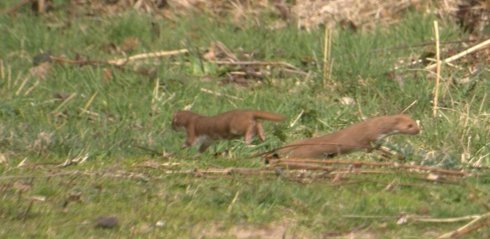
© Phil Walsh
Mink
Mustela vison
This introduced American species was recorded infrequently up to the early
1990s. This species made an
unwelcome return in May 2010 with one on the Main Pond. Further records followed
and led to Coot abandoning the site but there has been no further reports.
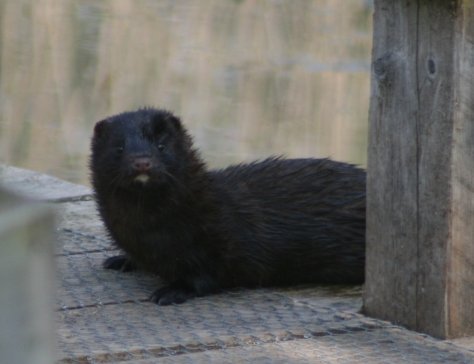
© Matt Twydell
Badger
Meles meles
There are no setts in the recording area, but individuals are occasionally resident.
Rarely seen, their presence is often revealed by diggings for worms on the Golf
Course fairways or prints along the sand dunes.
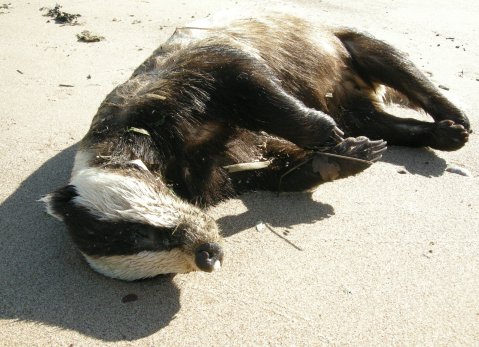
© Lee Collins
Otter
Lutra lutra
There is an old report of one being washed up dead on the tideline, this species may have been present in the
past, along with other species such as Brown Hare.
Common Seal
Phoca
vitulina
Common Seal is a rare visitor with only two or three recent
records. A long term resident was also present in the estuary until 2018.
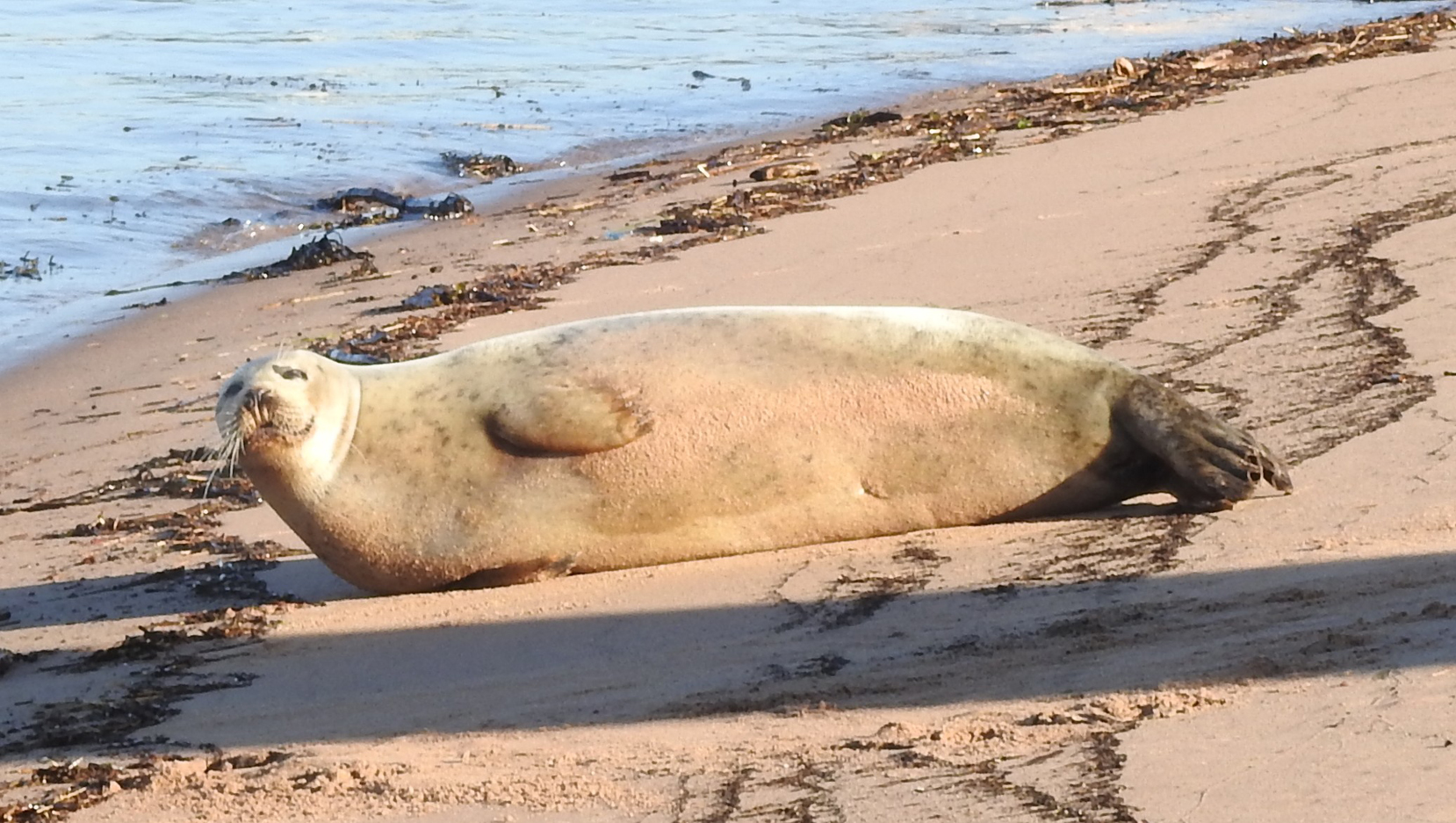
© Alan Keatley
(Atlantic) Grey Seal
Halichoerus grypus
Despite the name the Grey Seal is by far the commonest
recorded here, individuals often remain in the area for long periods and it can
be encountered throughout the year. They are most often seen in the river at
high tide or hauled out on exposed sandbars.
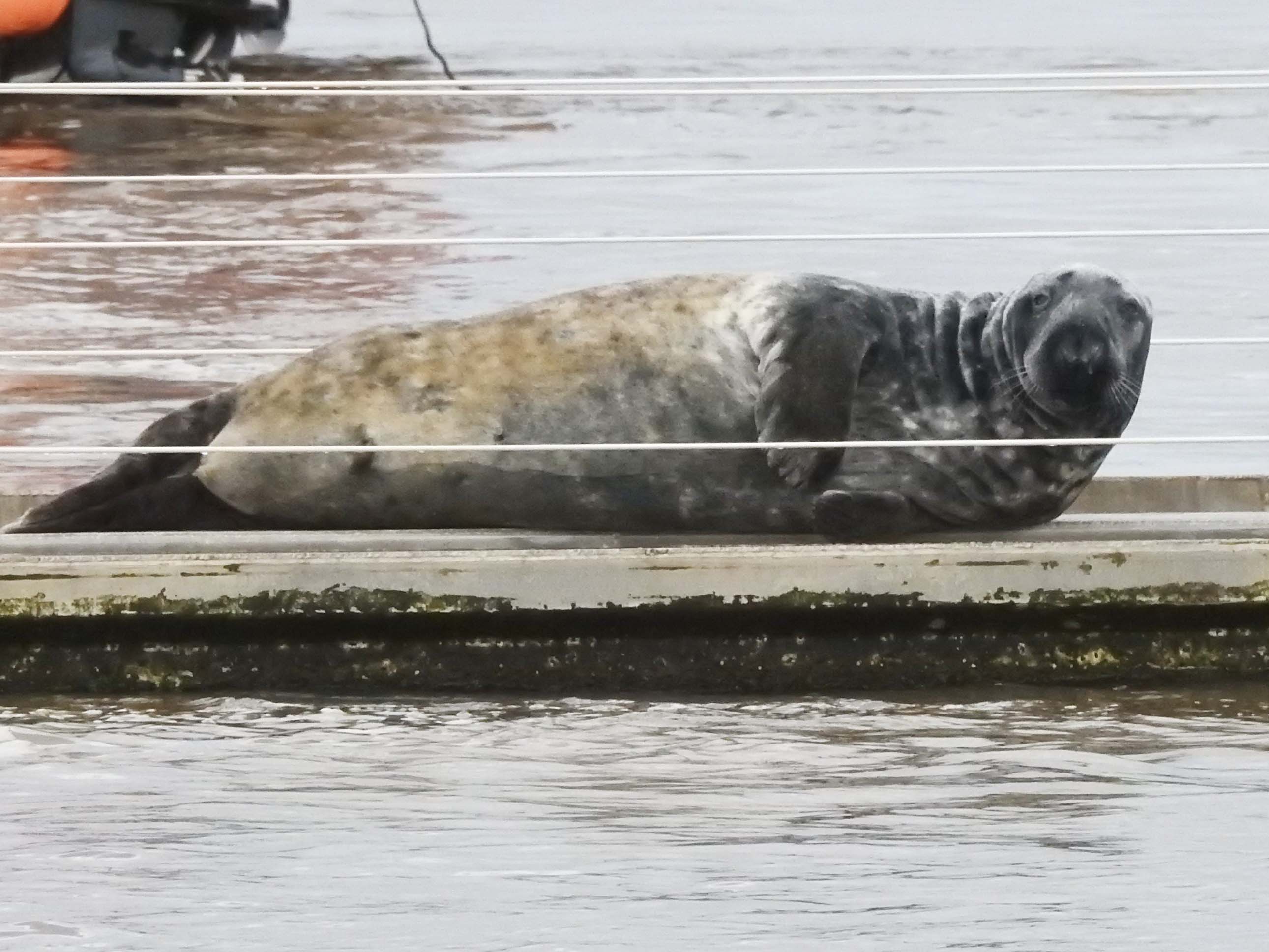
© Alan Keatley
Roe Deer
Capreolus
capreolus
The first record was a single hind present on site for several weeks in the autumn of 2001.
Despite the length of stay it was only seen infrequently, usually around
Greenland Lake and Dead Dolphin Wood, another was present in 2004 & 2005. Other
records include a hind which was recorded walking in front of the hide before
swimming across Shutterton Creek, one in the Entrance Bushes in May 2008 and two
together on the Golf Course in 2010. The only recent record was from footprints
on Warren Point in June 2016, one had been seen the previous day trying to swim
across
from Exmouth.
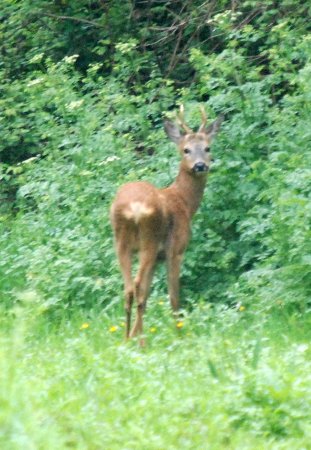
May 2008 © Simon Thurgood